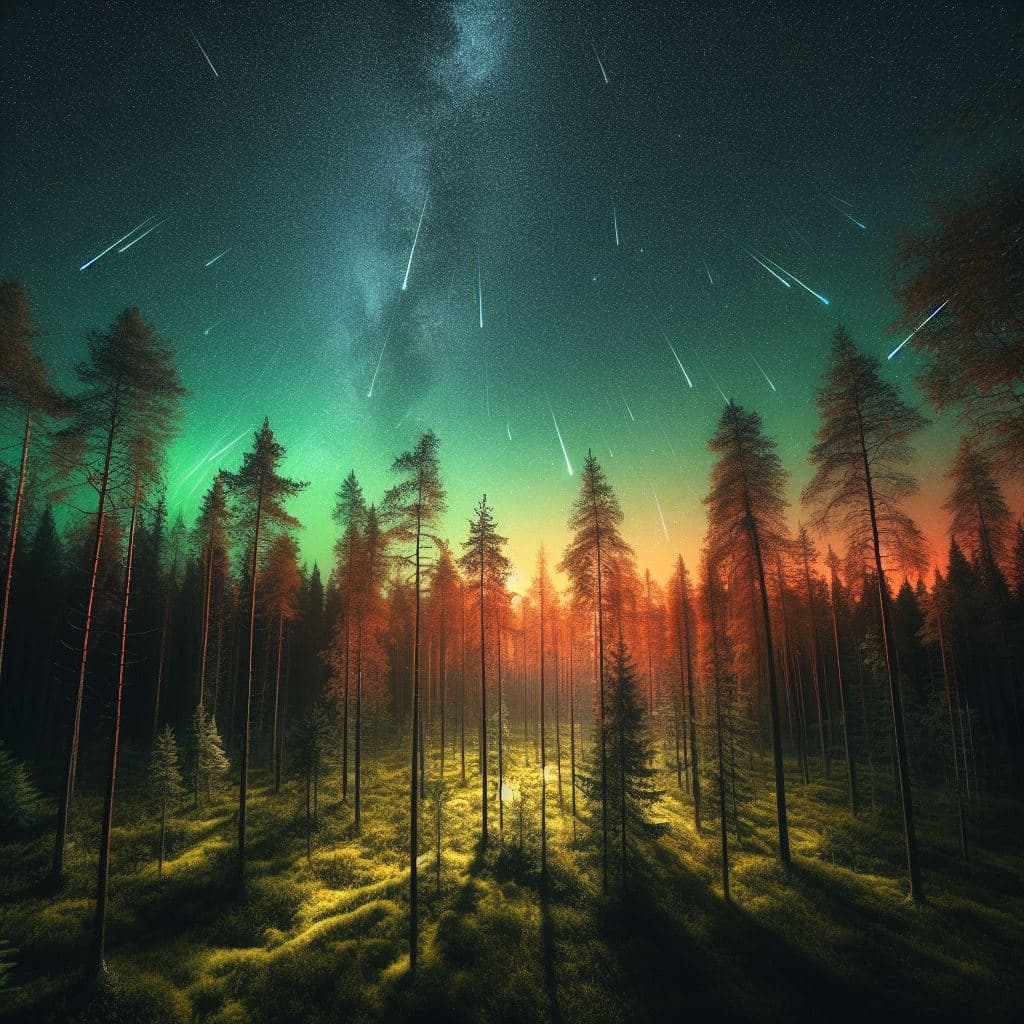Picture this: a chilly October evening with a clear sky showcasing a celestial drama as it unfolds. This isn’t a scene from a sci-fi movie, but the reality come October 8th when the Draconid meteor shower graces the night sky. This meteor shower is a result of the Earth passing through the debris left behind by comet 21P/Giacobini-Zinner, a mouthful of a name that holds the key to this spectacular night show.
What Makes the Draconids Special?
Unlike the more recent Perseid meteor shower which had us craning our necks until the wee hours, the Draconids are a kinder, evening-friendly spectacle. They get their name from the constellation Draco, and are also known as the Giacobinids, a name derived from Michael Giacobini, the astronomer who discovered the parent comet. While the Draconids may not be as prolific as the Perseids (expect about 10 meteors an hour at peak), they do offer an easier viewing experience. The best part? The meteor shower will be visible right after nightfall, perfect for those of us who cherish our sleep.
When and Where to Catch the Show
The Draconid meteor shower will be active from Friday, October 6th through Tuesday, October 10th, but the prime time to catch the show is on the evening of October 8th. Unlike many other meteor showers, the Draconids peak in the early evening, so there’s no need to mess up your sleep schedule. As soon as the sky darkens, head outside and look north towards the constellation Draco, though meteors will be visible all over the sky.
For the best viewing experience, escape the city lights and find a dark, quiet spot to enjoy the show. Remember, patience is key—give your eyes about 20 minutes to adjust to the darkness, and then sit back, relax, and enjoy the show.
Weather and Viewing Conditions
Unfortunately, the weather can be a bit of a party pooper when it comes to meteor showers. This year, the UK’s Met Office has forecasted persistent heavy rain for Scotland on Saturday, which may extend into Sunday. However, things are looking up as the rain is expected to clear overnight. Temperatures are expected to be quite warm, reaching up to 27C. The less light pollution and cloud cover, the better the viewing experience will be, so keep your fingers crossed for clear skies!
The Next Celestial Show
If you miss the Draconids, fret not. The Orionid meteor shower is hot on its heels, peaking on the night of October 21st into the morning of October 22nd. The Orionids promise a similar, if not better, show with an estimated 10 to 20 meteors per hour, and potentially some fireballs to light up the night sky. So mark your calendars, and get ready for a month of celestial spectacles!
Conclusion
The Draconid meteor shower is a gentle reminder of the cosmic ballet constantly taking place overhead. As we go about our busy lives, it's worth taking a moment to look up and appreciate the natural wonders that unfold above us. So grab a blanket, head outdoors, and let the Draconid meteor shower remind you of the beauty and mystery of the cosmos.
